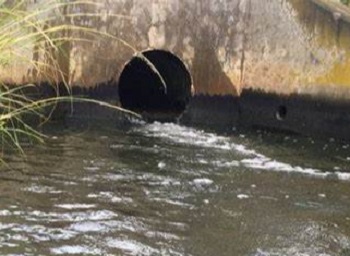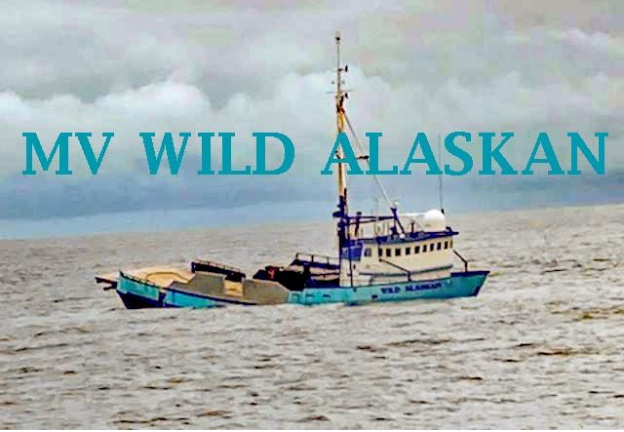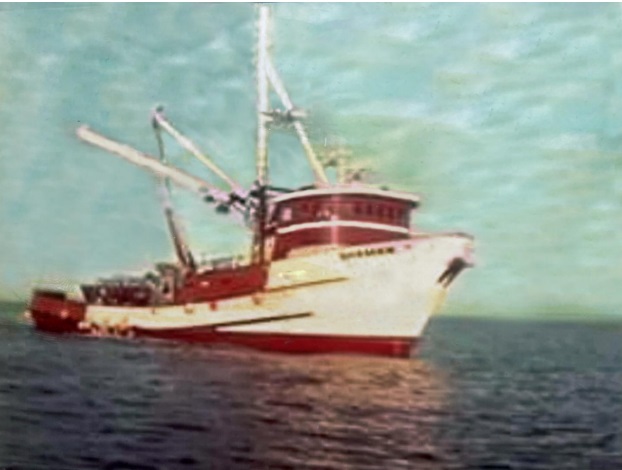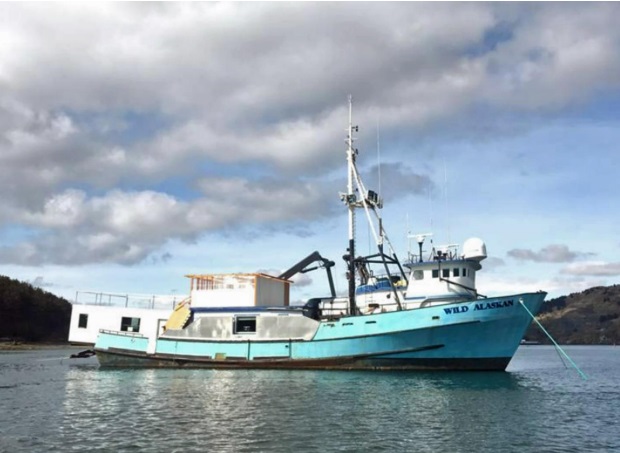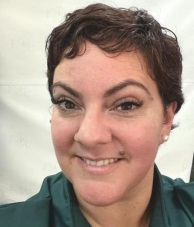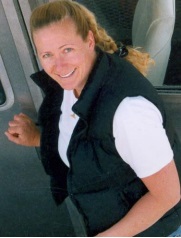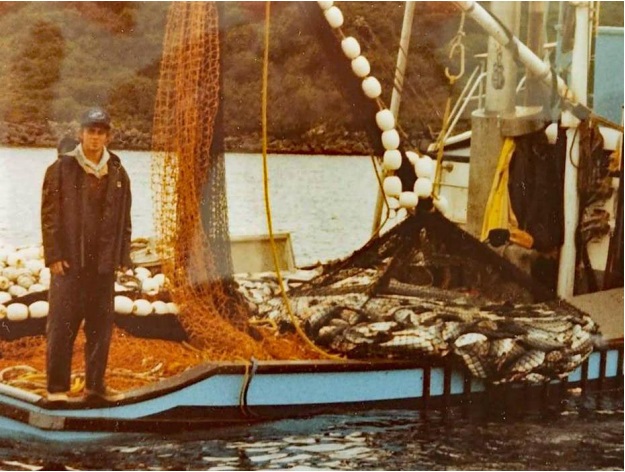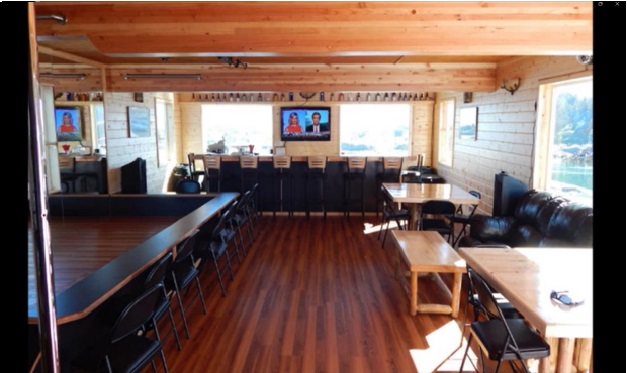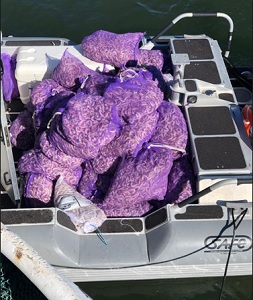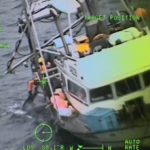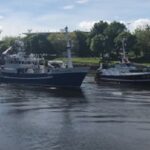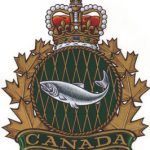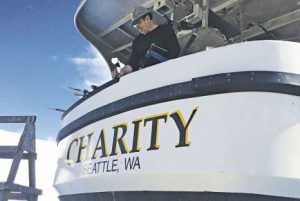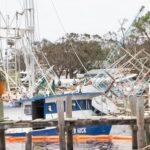Search Results for: waste water treatment
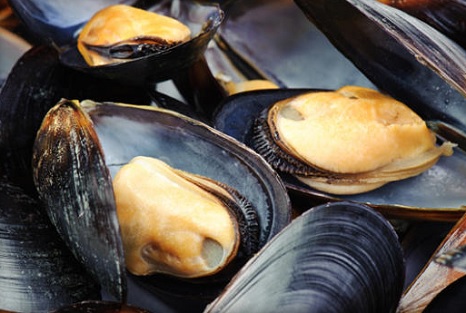
Waste Water Treatment Plants: Mussels off the coast of Seattle test positive for opioids
As more and more American communities grapple with opioid addiction, the human toll of the epidemic has grown in both scope and severity. And now, scientists at the Washington Department of Fish and Wildlife have found evidence that drug’s impact has literally flowed downstream to affect marine life, as well.,,, In three of the 18 locations, the mussels then tested positive for trace amounts of oxycodone. How, you ask? When humans ingest opioids like oxycodone, they ultimately end up excreting traces of the drugs into the toilet. Those chemicals then end up in wastewater. And while many contaminants are filtered out of wastewater before it’s released into the oceans, wastewater management systems can’t entirely filter out drugs. Thus, opioids, antidepressants, the common chemotherapy drug Melphalan — the mussels tested positive for all of them. >click to read<08:04
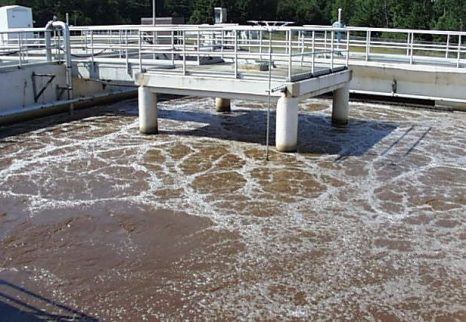
Waste Water Treatment Plants: Once home to thriving aquaculture, Great Bay is under great strain
GREAT BAY’S wonderful production of gourmet food has come to an unbelievable halt, and there’s bound to be a lot of uninformed debate on how to get those species such as clams, oysters, smelt, herring, white perch, crabs, lobsters and other multiple flora and fauna that may slip my mind.,, We’ve lost just about all of this incredible fish and game resource gradually! We’re going to get some flack from the do-gooders as to why they are gone, but when you look at the changes that have been parallel to the loss of fish, it’s been the rebuilding or refitting of the many sewage treatment plants that have been put into service that seem to be the answer to this lack of fish and game. You can see it in the lack of eelgrass beds that used to cover thousands of acres of tidal flats. These new treatment plants have filtered or poisoned most of the nutrients from the Piscataqua River and the many other rivers that serve their municipalities that dump their now super-treated effluent into the tidal water, now so sterile and lacking in nutrients and full of poison that plants and animals cannot survive. Read this article! click here 08:43
Household products, pharmaceuticals make fish unafraid of predators – Waste Water Treatment is Inadequate

A recent US study into the presence of pharmaceuticals in freshwater areas receiving sewage effluent found evidence of the Prozac in fish brains. Showering, brushing your teeth, and going to the toilet can wash dangerous contaminants into waterways that can disrupt fish reproductive systems and make them unafraid of mortal predators, scientists have found. And current sewage treatment processes were not designed to remove the dangerous contaminants. more@nzherald 11:12
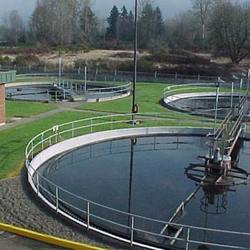
Wastewater Treatment Plants: Cocktail of drugs taint bonefish in Biscayne Bay and Keys, study finds.
A cocktail of prescription drugs, from blood pressure medications to opioids, has found its way into the flesh of South Florida’s population of bonefish, one of the state’s most sought-after game fish, according to a study released this week. “The source of this contamination is human waste and a wastewater infrastructure that has been pressed beyond its technological capability and capacity, at least to meet the demands of today,” The culprit is a sewage system designed to filter out fecal matter and other pollution, but not pharmaceuticals, researchers at Florida International University and the Bonefish and Tarpon Trust say. >click to read< 09:07 Read more about wastewater treatment plants, >click to read<

First Nation, fishermen distrust Northern Pulp wastewater treatment plan
There’s too much risk and not nearly enough trust to bring Northern Pulp’s plan for a new wastewater treatment facility to fruition, according to Andrea Paul, the chief of the Pictou Landing First Nation, and scores of fishermen and residents in Pictou County.,,, Concerned Northumberland Strait fishermen met with the company on Monday and two public consultations were held on Tuesday and Wednesday.,,, Speaking on behalf of the Northumberland Fisheries Association, lobster fisherman Allan MacCarthy said the Monday meeting did not offer any answers. click here to read the story 10:42
Scientists concerned over health of fish species as wastewater treatment plants fail to remove drugs
 Human antidepressants are building up in the brains of bass, walleye and several other fish common to the Great Lakes region, scientists say. In a new study, researchers detected high concentrations of these drugs and their metabolized remnants in the brain tissue of 10 fish species found in the Niagara River. The discovery of antidepressants in aquatic life in the river raises serious environmental concerns, says lead scientist Diana Aga, PhD, the Henry M. Woodburn Professor of chemistry in the University at Buffalo College of Arts and Sciences. “These active ingredients from antidepressants, which are coming out from wastewater treatment plants, are accumulating in fish brains,” Aga says. “It is a threat to biodiversity, and we should be very concerned. click here to read the story 16:57
Human antidepressants are building up in the brains of bass, walleye and several other fish common to the Great Lakes region, scientists say. In a new study, researchers detected high concentrations of these drugs and their metabolized remnants in the brain tissue of 10 fish species found in the Niagara River. The discovery of antidepressants in aquatic life in the river raises serious environmental concerns, says lead scientist Diana Aga, PhD, the Henry M. Woodburn Professor of chemistry in the University at Buffalo College of Arts and Sciences. “These active ingredients from antidepressants, which are coming out from wastewater treatment plants, are accumulating in fish brains,” Aga says. “It is a threat to biodiversity, and we should be very concerned. click here to read the story 16:57
Wastewater Treatment Plants: Pharmaceutical fish – SCSU experiments
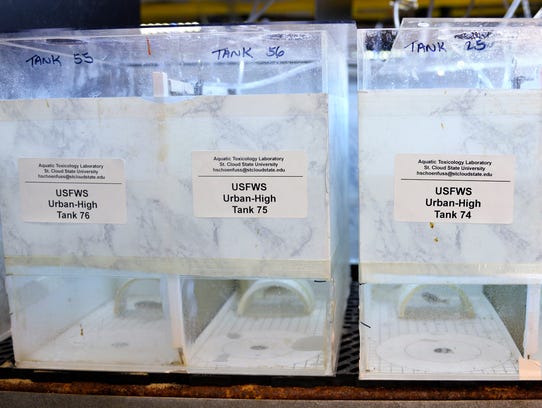
Wastewater Treatment Plants – Why we can’t get our water supply free of drugs.
Vance Trudeau, a biologist at the University of Ottawa, who has found evidence of “sexual side effects” in goldfish exposed to traces of Prozac in his lab, says “Prozac is the tip of the iceberg.” He adds that U.S. waterways are becoming a and he, along with Writer and other biologists, say that soup is becoming more difficult to identify and filter everyday. “Most sewage treatment plants have not been built with the removal of pharmaceuticals in mind because it wasn’t something people were thinking about,” Trudeau says. “To upgrade is prohibitively expensive. So pretty much anything we take ends up in the water.” Read the rest here 23:01
Upgrading Sacramento’s wastewater treatment could cost $2 billion
 In December 2010, the Central Valley Regional Water Quality Control Board told the plant to clean up its effluent as a condition of renewing its state discharge permit. The board found that high volumes of ammonia in the water were disrupting the food chain and endangering fish such as salmon and Delta smelt. Single-celled organisms posed health risks to people who came in contact with the river water, board members concluded. Read more here 09:12
In December 2010, the Central Valley Regional Water Quality Control Board told the plant to clean up its effluent as a condition of renewing its state discharge permit. The board found that high volumes of ammonia in the water were disrupting the food chain and endangering fish such as salmon and Delta smelt. Single-celled organisms posed health risks to people who came in contact with the river water, board members concluded. Read more here 09:12
Pharmaceuticals and personal care products (PPCPs) are found in surface waters worldwide. Wastewater treatment plant effluent is a major source
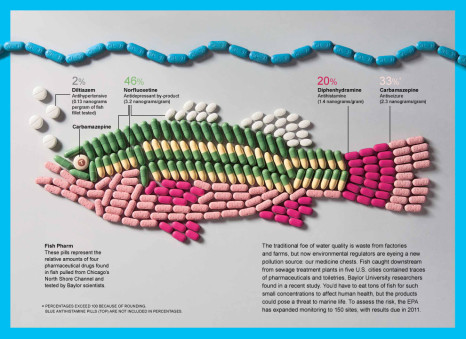 Fate and Transport of Three Pharmaceuticals in the Sacramento-San Joaquin Delta – The sharp decline of four pelagic fish species in the Delta in the last decade is just one of several indicators that the ecosystem is severely impaired. Several wastewater treatment plants (WWTPs) discharge into the Delta, directly or through tributaries. Link
Fate and Transport of Three Pharmaceuticals in the Sacramento-San Joaquin Delta – The sharp decline of four pelagic fish species in the Delta in the last decade is just one of several indicators that the ecosystem is severely impaired. Several wastewater treatment plants (WWTPs) discharge into the Delta, directly or through tributaries. Link
$75.6M wastewater treatment project moves forward in Portsmouth to meet the new nitrogen standard.
![]() Councilors were unanimously in support of the move, which involves the city using a technology known as “biological aerated filter” to reach a total nitrogen limit of 8 milligrams per liter on a seasonal rolling average basis. continued
Councilors were unanimously in support of the move, which involves the city using a technology known as “biological aerated filter” to reach a total nitrogen limit of 8 milligrams per liter on a seasonal rolling average basis. continued
Protecting Fish from Antidepressants by Using New Wastewater Treatment Technique

Researchers at KTH Royal Institute of Technology in Stockholm have developed a new technique to prevent pharmaceutical residues from entering waterways and harming wildlife. Read more here
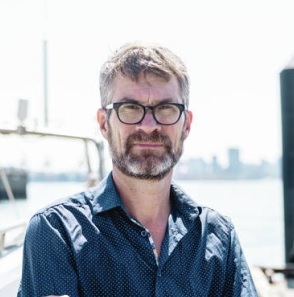
British Columbia: Pollution expert aims to create ‘water champions’
Peter Ross, an internationally recognized expert in water pollution, looks out over the sparkling waters of Burrard Inlet and sees something others do not. Invisible chemicals tend to be out of sight and out of mind, says Ross. But they leach into watercourses and into the marine food chain, creating “an invisible crisis.” “There are 500,000 chemicals on the global marketplace,” he said. Many of those will surreptitiously make their way into the food chain. Salmon heading up the Fraser River are also “basically running a gauntlet,” said Ross, “past wastewater treatment plants, past farms, past pulp mills, past refineries and storm drains.” Pollution is also an issue in drinking water,>click to read< – A global problem? 6PPD quinone: The environmental contaminant killing Coho salmon-An everyday chemical has been found to be highly toxic. Contamination of waterways is responsible for what had been the unexplained mass deaths of Coho salmon. We take a look at 6-PPD quinone, >click to read<14:39
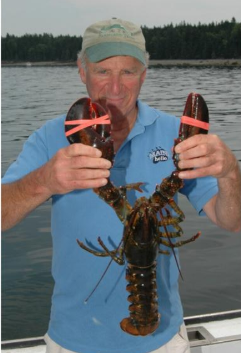
Lobster may lead to Coronavirus treatment
A Maine-based researcher and professor is optimistic a treatment for the global pandemic could be hiding in plain sight and Maine waters: in lobsters’ circulatory fluid, analogous to blood. That fluid, called hemolymph, is seen by most as trash — a throwaway byproduct that’s nothing more than production waste in lobster processing after they’re caught by fishermen. Lobsters’ hemolymph holds a protein that’s worked as an antiviral on herpes and shingles and may fight the coronavirus, Robert Bayer said. >click to read< 12:21

Looming Northern Pulp decision churns up worries on the water
“Of course I’m thinking about it,” said Anderson, not looking up from his stitching. “Everybody’s losing sleep.” Environment Minister Gordon Wilson has until Tuesday to decide whether to allow Northern Pulp to build a new effluent treatment facility that will pump up to 85 million litres of treated wastewater into the Northumberland Strait. The pipe runs by the Caribou wharf, home port to 68 fishing boats. >click to read< 07:16

New law ‘turns on the spigot’ at old plant that treats wastewater on Delaware River
A South Jersey company could soon again be processing millions of gallons of hazardous wastewater and dumping the residue into the Delaware River thanks to a bill signed into law by Gov. Phil Murphy. The measure updates the definition of what an existing hazardous waste facility is under state law, basically grandfathering in Chemours’ wastewater treatment plant in Carneys Point, enabling it to possibly resume again accepting outside waste to treat. During the multi-step process, solids are removed and the cleaned water is dumped into the nearby Delaware River. >click to read<08:58
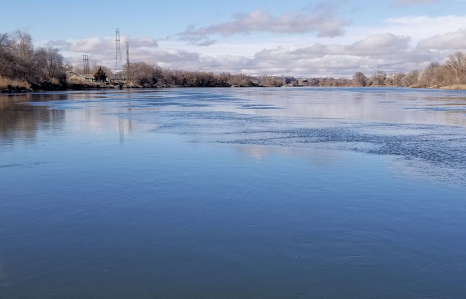
Wastewater worries
On Tuesday, the Ontario City Council voted to have City Manager Adam Brown send a returning letter to Oregon’s Department of Environmental Quality. The letter will outline major concerns with a draft sent to the city by the department for review and comment of National Pollutant Discharge Elimination System permit. The permit would allow the city to discharge wastewater into the Snake River, with new limits and pollutant monitoring six months out of the year.,, Among top concerns are the exorbitant costs to upgrade existing wastewater treatment facilities,,, Arsenic, along with copper and mercury are bioaccumulative toxins that aggregate in fish tissue,,, >click to read< 18:50
New Report Identifies Sources of Nitrogen Loading in Local Waters
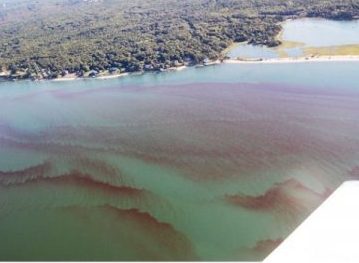 A new report has pinpointed sources of nitrogen loading in local waters. The New York Department of State released the Long Island South Shore Estuary Reserve water quality report on Wednesday, which identifies sources of pollution in eastern bays and takes a closer look at ways to improving the environmental health of local waters, a release said. Nitrogen sources identified in the report include stormwater runoff, drainage or seepage — including seepage from septic systems and cesspools. Other sources include failing or inadequate on-site wastewater treatment systems discharging to the bays, the report says. The “Long Island South Shore Estuary Reserve Eastern Bays Project: Nitrogen Loading, Sources, and Management Options” report was completed in cooperation with Stony Brook University School of Marine and Atmospheric Sciences and is an important step in estimating the amount of nitrogen that causes water degradation to the South Shore of Long Island, officials said. Excess nitrogen has led to an increase in algal blooms, a reduction in seagrass beds that provide habitat for shellfish and finfish and a host of other water quality impairments. The nitrogen pollution has also contributed to the decline of shellfish and commercial fishing on Long Island, the report said. Read the story here 08:21
A new report has pinpointed sources of nitrogen loading in local waters. The New York Department of State released the Long Island South Shore Estuary Reserve water quality report on Wednesday, which identifies sources of pollution in eastern bays and takes a closer look at ways to improving the environmental health of local waters, a release said. Nitrogen sources identified in the report include stormwater runoff, drainage or seepage — including seepage from septic systems and cesspools. Other sources include failing or inadequate on-site wastewater treatment systems discharging to the bays, the report says. The “Long Island South Shore Estuary Reserve Eastern Bays Project: Nitrogen Loading, Sources, and Management Options” report was completed in cooperation with Stony Brook University School of Marine and Atmospheric Sciences and is an important step in estimating the amount of nitrogen that causes water degradation to the South Shore of Long Island, officials said. Excess nitrogen has led to an increase in algal blooms, a reduction in seagrass beds that provide habitat for shellfish and finfish and a host of other water quality impairments. The nitrogen pollution has also contributed to the decline of shellfish and commercial fishing on Long Island, the report said. Read the story here 08:21
They say The Sky isn’t Falling. I disagree! The sky has fallen, and Fishermen are paying for it. Pharmaceuticals in our water
 There’s no way around it, the headlines are disturbing. They describe fish and birds responding with altered behavior and reproductive systems to antidepressants, diabetes medication, and other psychoactive or hormonally active drugs at concentrations found in the environment. About 90% of pharmaceuticals found in the environment arrive there after being excreted. Wastewater treatment plants, meanwhile, are exploring possibilities for boosting their ability to remove pharmaceuticals from sewage. Read the rest here 13:49
There’s no way around it, the headlines are disturbing. They describe fish and birds responding with altered behavior and reproductive systems to antidepressants, diabetes medication, and other psychoactive or hormonally active drugs at concentrations found in the environment. About 90% of pharmaceuticals found in the environment arrive there after being excreted. Wastewater treatment plants, meanwhile, are exploring possibilities for boosting their ability to remove pharmaceuticals from sewage. Read the rest here 13:49
Blue Water Fishermen’s Association – Raising the conservation bar for almost a quarter of a century
 “Working with the leadership of the organization, I have seen first-hand how the Blue Water Fishermen’s Association has played a key role over the past two decades in ensuring sustainable fishing practices and a level playing field for U.S. fishermen. BWFA leadership endorsed, along with several environmental NGOs, a USG proposal to reduce Atlantic quotas across the board in order to rebuild the swordfish stock. With work behind the scenes to communicate directly with their counterparts in other countries, the first-ever successful international rebuilding program was implemented.” (Rebecca Lent, formerly with NOAA Fisheries)
“Working with the leadership of the organization, I have seen first-hand how the Blue Water Fishermen’s Association has played a key role over the past two decades in ensuring sustainable fishing practices and a level playing field for U.S. fishermen. BWFA leadership endorsed, along with several environmental NGOs, a USG proposal to reduce Atlantic quotas across the board in order to rebuild the swordfish stock. With work behind the scenes to communicate directly with their counterparts in other countries, the first-ever successful international rebuilding program was implemented.” (Rebecca Lent, formerly with NOAA Fisheries)
I had the pleasure, both personal and professional, of attending the annual membership meeting of the Blue Water Fishermen’s Association (BWFA) in Atlantic City in April. It was pleasurable in large part because I got to catch up with old friends who I haven’t seen nearly as much as I would like to in recent years, and that was the personal part. The professional part, however, was my being able to once again experience at firsthand how a fishermen’s association that is truly committed to conservation operates internally (this isn’t to imply that there aren’t a whole slew of fishermen’s organizations whose members aren’t similarly committed. In 2014 this is the rule, not the exception).
First off, for those readers who aren’t familiar with BWFA, next year will be its 25th year of representing members of the pelagic longline fishery on the East and Gulf coasts.
One of the speakers at the meeting was Dr. Mariluz Parga, a veterinarian with Submon (http://www.submon.org/en/who-are-we-in-submon/) in Barcelona, Spain. Submon is an organization which “provides environmental services related to the conservation, study and awareness of the marine environment” and Dr. Parga is a sea turtle specialist who was at the meeting as a contractor to the NOAA/NMFS Bycatch Reduction and Engineering Program.
Her presentation immediately followed an update on the sea turtle program by Charles Bergmann from the Harvesting Systems and Engineering Branch at the NMFS Pascagoula, Mississippi lab. In total BWFA dedicated at least twenty percent of their one day annual meeting to sea turtle conservation involving interactions with pelagic longline gear and how they can be mitigated.
Considering that this is probably the only opportunity that many BWFA members have every year to get together minus the constraints of everyday business pressures, as well as the fact that they are facing the same problems that every other US commercial fisherman and those in US fishing-dependent businesses this might be considered excessive. However, and this is something that will probably be understood by anyone in the commercial fisheries, it’s a testament to how critical conservation has become to the pelagic longline fishermen in particular and to our domestic seafood harvesters in general. It’s safe to say that US fishermen are among the mostly highly regulated in the world, and accordingly they are interested in and to a very large extent focused on the creation, implementation and effectiveness of the regulations that are so important to their businesses.
Dr. Parga discussed her work on sea turtle/fishhook interactions in various several countries. From the start it was obvious that she was as interested in hearing what the fishermen had to say as she was in them hearing her presentation. After many instances of listening to protected resources researchers and bureaucrats talking at, and too often talking down at, fishermen this was like the proverbial breath of springtime. It was obvious that she felt that the only way to be effective in reducing unwelcome interactions is by working with the fishermen. This is something that most of the ENGO “crusaders” who are so busy protecting this, that or the other thing from the depredations of commercial fishermen have yet to learn – or perhaps are disinclined to learn because of all the bucks and publicity that flow from MMPA/ESA lawsuits.
It was obvious that Dr. Parga (and Mr. Bergmann as well, though to anyone who knows Charlie, that goes without saying) was interested in all sides of the sea turtle/fishermen interactions equation and the BWFA members responded to her and her presentation accordingly.
I was impressed. But on looking back at my almost twenty-five years of association with BWFA since it began, and of a number of its founders/members before that, it certainly wasn’t the first time that I had been impressed by the strides they had made in the conservation of both swordfish/tuna conservation and in the incidental catch of other species as well.
Going back to a Subcommittee on Fisheries Management of the House Committee On Merchant Marine and Fisheries on the Atlantic Tunas Conservation Act reauthorization on October 23, 1993, Nelson Beideman, a founder of BWFA and its long-time Executive Director until his death in 2006, testified “regulating only the U.S. commercial and recreational fishermen will not conserve these fish which are found in virtually all areas of the Atlantic. How successful can conservation negotiations be if other countries across the table know (before we even sit down to negotiate) that the U.S. will take all necessary steps unilaterally? What incentive do they have to agree to management and conservation measures?” This testimony set the tone for BWFA’s management and research activities early on, a tone which is still influencing the organization, its members and its activities today. Highly Migratory Species management, to be effective, must address every aspect of the various fisheries throughout their range.
In fact, in 2007 Nelson was given a posthumous tribute at NOAA’s Sustainable Fisheries Leadership Awards ceremony. From the NOAA/NMFS web page memorializing the ceremony, he “helped initiate some of the most effective collaborative research projects between commercial fishermen, NOAA scientists and conservation organizations. He was an active fisheries management partner who was instrumental in efforts to reduce domestic and international bycatch of sea turtles, and develop domestic and international management programs that led to the rebuilding of north Atlantic swordfish” (http://www.nmfs.noaa.gov/awards/2007.htm. For a more extensive review of this work see
Having a guest speaker at the BWFA annual meeting who is a turtle conservation specialist from Spain is a recognition of how truly international HMS management must be to be effective, and of the fact that BWFA’s members and staff have recognized that, and have been working towards that end for more than two decades.
On the other side of the fence
It was back in August 1997 that Pew Environmental Program Director Joshua Reichert wrote in an op-ed article titled Swordfish technique depletes the swordfish population printed in the Philadelphia Inquirer “the root problem is not only the size of the quota, the length of the season, or the number of vessels involved. It is how the fish are caught. Use of longlines must be barred.”
Five years later members of ENGOs established and or supported by the Pew Charitable Trusts went to great lengths to take credit for the recovery of the North Atlantic swordfish stock via their Give Swordfish A Break media campaign, which was begun in 1998 by a Pew created ENGO named SeaWeb. Needless to say, their PR blitz made no mention of the fact that BWFA had been championing swordfish conservation in the entire North Atlantic years prior to the Pew campaign.
How legitimate was Mr. Reichert’s and his minions’ commitment to saving swordfish and to ending longlining, the principal method developed for their harvest? Obviously that’s information that I’m not privy to, but consider that in a 1998 article in the St. Petersburg Times (FL), titled En Garde for Swordfish (http://www.fishtruth.net/PDF/SpruillSwordfish.pdf), reporter Bill Duryea detailed the SeaWeb strategy behind the Give Swordfish A Break campaign. “The first thing (SeaWeb Executive Director) Vikki Spruill did when she went looking for a fish to save did not have to do with fish at all,” Duryea wrote. Having decided that the most effective way to “engage the public interest” in ocean problems was through the food on their plate, Spruill” Duryea wrote “needed a certain kind of fish. A poster fish, if you will. Shrimp and salmon rank at the top of the most popular seafoods, but half of the shrimp and salmon sold in the United States are farm-raised, tempering their status as overfished. Besides, shrimp lack a certain weightiness. ‘We wanted something majestic,’ said Spruill. Number 3 on the popularity list, according to Spruill, was swordfish, whose firm-fleshed steaks had become a mainstay of fashionable restaurants across the country.”
Josh Reichert’s and Pew’s actions to destroy a form of fishing that has been accepted and effective for well over a century (tub trawls, also known as bottom longlines, were employed by the dory fishermen on the Grand Banks off Newfoundland who Rudyard Kipling immortalized in his novel Captains Courageous) appeared, at least in Vikki Spruill’s opinion as related to Bill Duryea, have far less to do with saving swordfish than they did to crassly using the “majestic” image of swordfish and their popularity in white tablecloth restaurants to advance their ocean agenda.
But note that BWFA’s efforts to have meaningful international conservation measures for the HMS fisheries adopted in the North Atlantic years started long before any of the people at Pew took any public positions regarding them. The swordfish had gotten their break starting at least in 1993, and that break was because of the efforts of BWFA, not because a handful of chefs who had no idea of what was going on in international swordfish management – the only effective method for managing swordfish or other HMS – were convinced by an expensive foundation supported campaign that the U.S. swordfish fleet should be made accountable and, not coincidentally (if the Pew troops were paying any attention to head man Josh Reichert) driven into economic oblivion. This was one of the first times that domestic commercial fishermen were “collateral damage” in Pew SeaWeb’s (and the Pew Trusts’) campaign to appear to be the oceans’ saviors in the public eye.
But fortunately for the swordfish, for the longliners who catch them, and for seafood consumers who know what a culinary treat ocean fresh swordfish are, the pelagic longliners are still fishing and BWFA is still committed to effective international swordfish conservation.
“Without the research platforms provided by members of the BWFA, it would have been exceedingly difficult to test different hook type and bait combinations in the pelagic longline swordfish fishery in the goal of reducing sea turtle bycatch mortality. The successful results have not only allowed U.S. fisheries to continue to target swordfish and tunas, they have also been spread to fleets around the world through global and regional fishery management organizations.” (R. Lent as above)
But BWFA’s conservation interests go far beyond swordfish conservation.
Anyone with anything beyond a nodding acquaintance with open ocean fisheries has probably come upon anti-longlining rants referring to “walls of death” tens of miles long festooned with thousands of hooks and snagging virtually every innocent sea creature unfortunate enough to be swimming anywhere in the neighborhood.
How close to accurate are these “walls of death” claims? A pelagic longline uses floats to keep the baited hooks suspended in the water column. These floats are 1,000 feet apart and support the horizontal main line. Suspended from the main line are vertical lines from 60 to 100 feet long. Each has a circle hook (more on that later) at its end. There are 4 or 5 baited hooks suspended between each buoy – the hooks are 200 to 250 feet apart and hang anywhere from 50 feet to 300 feet below the surface.
In actuality there is a single 4 inch long hook embedded in a foot long dead squid or mackerel hanging every 200 feet along the longline and anywhere from 50 to 300 feet below the sea surface. If we were talking about a brick wall that wall would be .0001% brick and 99.9999% empty space. Some wall!
And then there’s the type of hooks that are used in the longlines. Essentially there are two types of hooks in use in recreational and commercial bait fisheries. The first of these are commonly called J hooks, which are constructed so that they will look a fish, or any other creatures that ingests it, anywhere in the digestive tract, depending on how the hook is swallowed. If the hook doesn’t lodge in the mouth, other organs are likely to be damaged during hooking or hook removal.
The alternative circle hooks, because of their configuration, tend to lodge in the angle of the jaw, causing minimal damage during hooking and when the hook is removed. Circle hooks are significantly less efficient than J hooks. In fact estimates are that the pelagic longliners can sacrifice up to a third of their targeted catch by switching to circle hooks. But switch they did, in spite of the reduced efficiency, because it cut down significantly on the mortality of fish (and turtles) that they inadvertently caught and subsequently released. BWFA played an essential role in the initial work leading to the adoption of a mandatory circle hook requirement in the domestic pelagic longline fishery and in getting the participants in their fishery to accept the requirement. If the members of BWFA weren’t the earliest adopters of circle hooks they were certainly among the earliest (see the NOAA/NMFS fact sheet for the Northeast Distant Fishery Sea Turtle Bycatch Reduction Project: Project Results: Avoiding Interactions & Reducing Harm at http://www.nmfs.noaa.gov/mediacenter/turtles/docs/project_results.pdf which took the circle hook research into international waters. BEWFA boats were the cooperating vessels. For a more comprehensive treatment see Do Circle Hooks Reduce The Mortality Of Sea Turtles In Pelagic Longlines? by A.J. Read at http://www.lenfestocean.org/sites/default/files/circle_hook_report.pdf).
The use of circle hooks by the pelagic longline fleet meant a 30% reduction in the swordfish catch.
This commitment to the use of circle hooks and the “ancillary” benefits to sea turtle conservation led naturally into an ongoing training program sponsored by NOAA/NMFS aimed at the captains, owners and crew of domestic pelagic longliners. The program is still in place and BWFA still plays an active role in organizing the training sessions and in insuring that to the greatest possible extent that the sea turtle handling requirements are both effective from the turtles’ perspective and practical for the fishermen. The presentations by Mr. Bergman and Dr. Parga were a part of this process, and the feedback provided by the fishermen has been and will continue to be an integral part of it.
And while on the subject of hooks, BWFA has also been actively engaged in the research leading to the adoption of “weak” hooks in the Gulf of Mexico pelagic longline fishery to reduce the negative impacts of their interactions with bluefin tuna there (see Fish Hooks Designed to Avoid the Wrong Catch in the New York Times at http://www.nytimes.com/2011/05/08/business/08novel.html?_r=0) . Is it any surprise that the Pew Environment Group opposed this conservation measure as well, a measure that the scientific experts, as well as NOAA/NMFS and the fishing industry strongly supported (http://www.pewenvironment.org/uploadedFiles/PEG/Publications/Fact_Sheet/A%20Weak%20Solution.pdf)?
BWFA is one of two fishing industry members in the Consortium for Wildlife Bycatch Reduction, a conservation group located at the New England Aquarium, “a partnership between science and industry to reduce bycatch of threatened marine animals” (http://www.neaq.org/conservation_and_research/projects/fisheries_bycatch_aquaculture/bycatch/consortium_for_wildlife_bycatch_reduction/index.php).
Then there’s Atlantic bluefin tuna
No discussion of the domestic pelagic longline fishery would be complete without including the latest on bluefin tuna management, which is part of the not yet approved Amendment 7 to the 2006 Consolidated Atlantic Highly Migratory Fishery Management Plan. This amendment introduces the Individual Bluefin Quota program for the PLL fleet. Its main provisions are to issue separate bluefin tuna quotas to each boat in the fleet based upon that vessel’s fishing history, making that quota transferable between vessels, and closing down the PLL fishery when(if) the quota is reached.
The stated objectives of the amendment are to:
- Limit bluefin landings and dead discards with a hard cap.
- Provide strong incentives to avoid bluefin tuna interactions.
- Provide flexibility to enable pelagic longline vessels to lease bluefin quota from other vessels.
- Balance the objectives of IBQ program with other Amendment 7 objectives, (e.g., optimize Fishing opportunities, maintain profitability, minimize impacts on the directed permit categories, and consider the broader objectives of the FMP).
The impetus for this program is the fact that the management program now in place requires that after the PLL fleet catches and keeps a specified number of bluefin tuna all of them that are subsequently caught must be “released” regardless of the condition they are in. This leads to the dead discarding of the fish, which is against the intent of national standard 9 of the Magnuson-Stevens Fishery Conservation and Management Act. This program will shift the responsibility for bluefin tuna bycatch away from the fleet to the individual boats/fishermen, will stop the waste of several tons of high quality fish every year and will cap the bycatch of bluefin tuna by the PLL fleet.
The design of this innovative program is yet another example of BWFA’s commitment to utilizing and advancing conservation goals both for the species its members target and for those that they unavoidably interact with.
Discriminating seafood consumers and real ocean conservationists should be supporting Blue Water Fishermen’s Association and the domestic pelagic longline fleet for at least another quarter of a century.
Only half of drugs, other newly emerging contaminants removed from sewage treatment
 Only about half of the prescription drugs and other newly emerging contaminants in sewage are removed by treatment plants. More than 1,400 wastewater treatment plants in the United States and Canada discharge 4.8 billion gallons of treated effluent into the Great Lakes basin every day, according to the study.The scientists reviewed 10 years of data from wastewater treatment plants worldwide to see how well they removed 42 compounds that are increasingly showing up in the Great Lakes. more@envirohealthnews 17:09
Only about half of the prescription drugs and other newly emerging contaminants in sewage are removed by treatment plants. More than 1,400 wastewater treatment plants in the United States and Canada discharge 4.8 billion gallons of treated effluent into the Great Lakes basin every day, according to the study.The scientists reviewed 10 years of data from wastewater treatment plants worldwide to see how well they removed 42 compounds that are increasingly showing up in the Great Lakes. more@envirohealthnews 17:09
Something fishy is afoot at old wastewater plant – interesting
A proposal from researchers in the University of Arizona’s College of Agriculture and Life Sciences suggests transforming the decommissioned wastewater treatment plant into a state-of-the-art research station that would become a fish hatchery, farming tilapia, striped bass and eels. continued@arizonadailystar
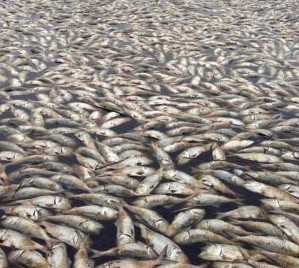
Sores, lesions: Early fish kill in Neuse worries those who use the river
State environmental crews are investigating a disturbing fish kill in the Neuse River. They’re trying to figure out why numerous schools of menhaden are breaking out in sores and dying in the river near New Bern.,,, The images are grotesque. Fish in the Neuse River swimming around with their insides hanging out.,, In a nutshell, the river is in very poor health and declining and continuing to decline,” said JoAnn Burkholder,,, Hans Paerl, said he believes pollution stirred up by Hurricane Florence could be the culprit now. And Paerl warns that water quality could deteriorate all summer if the weather is hot and dry. Scientists blame nutrient pollution from urban runoff, large industrial farms and waste water treatment plants. >click to read<11:25

Fishermen: Narragansett Bay cleanup might be doing harm
Narragansett Bay is cleaner and clearer than it’s been in decades. But after huge strides in treating wastewater and controlling storm runoff, some are asking a question that would have been unthinkable just a few years ago about what is arguably Rhode Island’s most valuable natural resource: Is the Bay too clean? Fishermen are raising the issue after seeing steep declines in numbers of flounder, lobster and other species that were once so abundant that they formed the bedrock of their industry. It has gotten bad enough that lobsterman Al Eagles says that he and others now call the Bay “Chernobyl,” a reference to the site of the devastating Soviet-era nuclear disaster. click here to read the story 09:20
Waste Water Treatment Plants: Once home to thriving aquaculture, Great Bay is under great strain – You can see it in the lack of eelgrass beds that used to cover thousands of acres of tidal flats. These new treatment plants have filtered or poisoned most of the nutrients from the Piscataqua River and the many other rivers that serve their municipalities that dump their now super-treated effluent into the tidal water, now so sterile and lacking in nutrients and full of poison that plants and animals cannot survive. click here to read the story
Gov. Hassan signs into law Great Bay shellfish restoration bill
Gov. Maggie Hassan has signed into law a bill that would allow the Fish and Game Department the closing of clam, oyster and other bivalve areas for restoration efforts in the Great Bay. (here) Why would she close them, when they are being destroyed by high nitrogen levels from run off and the dozen or so waste water treatment plants that continue to degrade the oysters and eel grass that they continue to try restoring? Get your head out of the sand, Governor. FN 09:24
Study finds birth control pill has negative effects on lake ecosystems
 The lead researcher of a new study is calling for improvements to some of Canada’s waste water treatment facilities after finding that introducing the birth control pill in waterways created a chain reaction in a lake ecosystem that nearly wiped out a freshwater fish. Read the rest here 22:48:07
The lead researcher of a new study is calling for improvements to some of Canada’s waste water treatment facilities after finding that introducing the birth control pill in waterways created a chain reaction in a lake ecosystem that nearly wiped out a freshwater fish. Read the rest here 22:48:07
American Style Environmentalism is Destroying The Environment
Tue May 8, 2012
John Johnson
This is the first of a series of articles exploring the failing model of American Environmentalism. In the series I will be outlining the results of considerable investigation and study of the persons and organizations, whose claims of acting on behalf of the environment have fallen far short of the truth. I will also be calling attention to the current genre of environmental propaganda, where it emanates from, who is producing it, and how it’s timely influence on public opinion has been used to place a very few in control of vast amounts of natural resources. In these articles I will explain facts uncovered and ask you to challenge pre-conceived notions and consider the evidence. What I will not do, is propose theory or editorialize about intentions, I prefer to let the facts speak for themselves and will not fill in the gaps with unproven accusation. This isn’t an easy topic to write about and I have no budget and very little help with it, so any information and input from readers will be greatly appreciated.
Today a majority of people in the US consider themselves to be environmentalists, or at least environmentally friendly, and an overwhelming majority express concern for the well being of the natural world and try to do less harm to it in their lives (I am proud to be a member of the first group.) For this majority environmentalism is about how you live your life and the small decisions that help to make our world better. Many people from this group donate time and money to environmental organizations taking action however they can. Unfortunately in many cases their good intentions are high jacked by clever salesmanship, cause marketing, and a broad based use of the media that pushes the public toward actions that make people feel good and away from doing any real good. I will use a real world example that more than makes the point.
Dawn dishwashing liquid (distributed by Proctor and Gamble) has a wildlife campaign that is advertised on the bottles of soap. The bottles proudly proclaim, “Dawn Helps Save Wildlife,” and feature heart warming pictures of ducks, penguins, and even two seals kissing (My personal favorite.) When you buy bottles of Dawn with these images a donation is made to an organization that advocates for wildlife protection. This decision to spend a little extra to help wildlife feels good. Like one of the little decisions we can all make every day to make the world better. Since they use the soap to wash off birds and mammals that have been harmed by oil spills it just makes sense. I was dismayed to learn that a large percentage of the bottles contain an extremely harmful pesticide that not only harms wildlife, but is doing massive amounts of environmental damage contributing to global warming and the destruction of the marine food web, actually starving the wildlife they claim to help.
The pesticide is called, “Triclosan,” and is an anti-bacterial agent found in an increasing number of soaps and other products sold in the US. Over the last ten years it’s use has increased dramatically and since it doesn’t readily breakdown in the environment, and cannot be removed by waste water treatment, rivers of it are running into the sea. Once it enters aquatic systems it kills phyto-plankton, (Microscopic plants that form the foundation of the ocean’s food web). The tiny organisms that remove carbon dioxide from the atmosphere and produce half of the world’s oxygen have declined dramatically (40 percent since 1950) causing mal-nutrition and loss of size in fish stocks around the world. Triclosan is a bio-accumulating substance and has been found in Dolphins and in drinking water supplies where it has been nearly impossible to filter out. Efforts to get it banned have failed due to the fact that the public remains largely ignorant of the problem as their attention is directed toward other environmental issues that do not affect publicly traded corporations.
Article Photo
Green chemicals to green wash everything.
http://www.foodandwaterwatch.org/factsheet/triclosan-what-the-research-shows/
http://www.foodandwaterwatch.org/factsheet/triclosan-what-the-research-shows/
http://www.foodandwaterwatch.org/blogs/down-the-drain-and-into-dolphins/
What happens to the donations made to wildlife advocacy groups when one purchases a hazardous chemical that damages the environment will be the topic of a future article.
We hear a lot in the media from environmental organizations and I like most people always accepted as credible the majority of statements made by these non-profit groups. I thought of them as mostly staffed by volunteers dedicated to the environment and imagined funding to come from kind persons with the means to help. I always found reports that they were only interested in control of natural resources to be less than credible, and usually from sources that were interested only in the exploitation of the natural world. Those populist views taught to me by the media were discredited by observation of the actions of the environmental industry and the simple fact that anyone no matter what their intentions or qualifications, can start an environmental group coupled with the premise that securing funding is made easy if their advocacy serves the agenda and business goals of resource oriented business owners and their foundations.
Article Photo
This graphic speaks volumes…
To say that all non-profit environmental organizations are good or bad is to paint with way too broad a brush in either case. The proliferation of non-profits and the variety of funding for them has left us with a growing industry that is largely un-regulated and represents a tremendous tax-payer investment not only in lost tax revenue (from deductions) but also in government funding for projects overseen by these organizations. A lack of oversight and accountability for the non-profits has left us with an incredibly expensive industry that is wide open to fraud and abuse. When you look at how much funding is pouring into these organizations and how much of it comes from the biggest polluters, exploiters, and resource accumulators of our world it doesn’t take long to realize that the people that are funding the organizations could be paying for some say in which environmental issues get attention and which ones don’t.
This is a very important topic to me. The stakes for our nation and our world are extremely high. We desperately need the mission that the environmental movement set out to accomplish to succeed. Sadly what started out as the best form of activism has been corporatized, politicized, and the few activists who would do real good have been marginalized, leaving the natural world with few obviously true advocates, and an increasing number of questionable ones.
Safeguarding Oregon’s Sustainable Seafood Industry: DEQ Urged to Reconsider Unachievable Permits
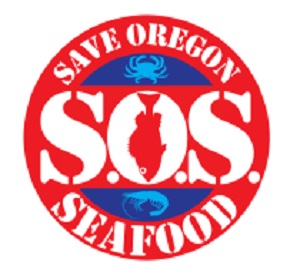 Oregon’s coast boasts the heart of our commercial fishing industry, renowned for its delectable, sustainable seafood that attracts nearly 30 million visitors annually. The bustling waterfronts not only offer picturesque scenery but also serve as vital economic hubs, providing generational fishing families with a market to deliver their catch and distribute Oregon’s seafood nationwide and across the globe.
Oregon’s coast boasts the heart of our commercial fishing industry, renowned for its delectable, sustainable seafood that attracts nearly 30 million visitors annually. The bustling waterfronts not only offer picturesque scenery but also serve as vital economic hubs, providing generational fishing families with a market to deliver their catch and distribute Oregon’s seafood nationwide and across the globe.
As proud stewards of the marine ecosystem, Oregon’s seafood industry has worked diligently for over a century to foster a sustainable environment, supporting thriving communities and vibrant coastal economies. However, our seafood industry now faces a critical challenge.
The Oregon Department of Environmental Quality (DEQ) has introduced new wastewater discharge permits that threaten the future of our industry. These permits are overly complicated, technically-infeasible, and they fail to consider the seafood processing industry’s unique traits and changing seasons. Even worse, they discourage recycling, hindering full utilization of our fisheries resources. This goes against our industry’s values and DEQ’s own goals of promoting recycling.
Despite years of seeking constructive dialogue with DEQ, we’ve encountered bureaucratic rhetoric and inconsistent responses without practical solutions. Our industry welcomes and encourages responsible regulation. We stand ready to continue to protect the environment and public health while producing sustainable seafood and supporting thousands of jobs in coastal communities. All we ask is that DEQ work with us and our technical experts to create scientifically-sound permits appropriate for our operations.
In the absence of cooperation and collaboration from DEQ, our industry has taken initiative to invest in research and test new water treatment systems over the past several years. While we’ve worked on solutions, DEQ has added new requirements to the permits for minerals that occur naturally in the environment or are ubiquitous in surface waters from other industries. It makes more sense to control these pollutants at the source of their release, using effective technology, rather than burden
downstream industries like seafood processors that don’t add or use these pollutants.
However, this is not an issue of finances. We’ve worked closely with leading scientists and engineers in seafood wastewater treatment, and they, too, find the new permit levels currently unattainable no matter the amount of money. Sadly, without a path forward, there is no way for us to continue to operate many facilities in Oregon.
The seafood processing industry’s message to DEQ is simple – let’s come together at the table to achieve our collective goals. The seafood processing industry can provide reasonable and scientifically-sound solutions. Together, we can protect coastal ecosystems and public health while ensuring the long-term prosperity of our industry and the livelihoods it sustains. The time has come for DEQ to demonstrate unwavering commitment to both the environment and the economic well-being of Oregon’s coastal communities.
The time has come to speak out in support of Oregon’s sustainable seafood industry. Please help us make our collective voice heard and protect our industry. Share your thoughts on the new permits by submitting a public comment; we’ve made it easy for you to do so at www.SaveOregonSeafood.org.
Lori Steele, Executive Director, WCSPA
The West Coast Seafood Processors Association (WCSPA) represents eight major shore-based seafood processing companies located throughout Washington, Oregon, and California, as well as a number of smaller processors and support businesses on the West Coast. WCSPA member companies process the vast majority of shoreside Pacific hake (whiting) and non-whiting groundfish (rockfish, sole, sablefish) landed on the U.S. West Coast, in addition to high volumes of Dungeness crab, Pacific pink shrimp, salmon, albacore tuna, and other important commercial species. WCSPA processors range from “mom and pop” operations to some of the largest seafood companies in the United States, employing thousands of workers in harvesting, processing, transporting, and distributing seafood across the country and throughout the world. WCSPA represents essential workers and food producers that contribute greatly to our Nation’s food security. Four of eight WCSPA member companies have
processing operations located in the state of Washington, providing thousands of year-round seafood production jobs in rural communities throughout the state.
Darren Byler files Two Multi-Million Dollar Lawsuits Against the Coast Guard and the City of Kodiak for the Illegal Sinking of the M/V Wild Alaskan
The 110’ F/V Shaman a Bering Sea Legend was just recently, intentionally sunk by the City of Kodiak, Alaska. The vessel was purchased in 2006 by Darren and Kimberly Byler from then owner, Dan Mattsen. The Byler’s took possession of the vessel at Fisherman’s Terminal in Seattle, Washington and relocated the vessel to Alaska. The Byler’s modified and remodeled the vessel for the Research, Exploration and Long-Range Charter Industry. From 2007-2014 Darren and Kimberly Byler were at the top of their game with this boat and renamed the vessel “Alaskan Leader”. The Byler’s provided Alaskan Hunting, Sportfishing, Sight Seeing, NOAA Research, Katmai Coast Bear Viewing and Discovery Channel Film Charters with the vessel which brought them significant success and notoriety in the Charter Industry.
In 2014, Darren Byler stated that his charter business bookings were down as was the economy, at that point Byler came up with an edgy idea to rename the vessel “Wild Alaskan” and provide an Adult Entertainment Charter with Topless Dancers to the local Kodiak Fishing and Coast Guard Population. Byler states, “This was a Constitutionally protected Entertainment Venue and I should not have had any problems while running a tight ship.”
As Byler has been quoted in many media interviews over the years, “This is nothing personal, it is just business.” “Our business was wildly successful” and “I didn’t invent this and it has been around for a while.” Unfortunately, for Byler the local authorities which included City of Kodiak Officials and local Coast Guard Officials were not as excited about Byler’s Entertainment Venue as the local Fishing Fleet was.
In fact, on day three after Byler opened the Wild Alaskan Entertainment Venue to the public, Lt. Sarah Lovette from the local Coast Guard Marine Safety Detachment shut down Byler’s charter for an alleged overloaded water taxi, expired life rafts and EPIRB on the Wild Alaskan. USCG Lt. Sarah Ann Lovette Photo Credit Kodiak Daily Mirror
As I have looked into these allegations by the Coast Guard, I discovered there is no record of any proof of a violation, citation or any fine given to Byler for the alleged overloaded water taxi violation. My investigation has also revealed that by law Byler did not need life rafts or an EPIRB inside the three-mile limit as the Wild Alaskan was anchored in the Kodiak Channel within a three-minute water taxi ride from the Kodiak Boat Harbor. Byler stated, “I had plenty of auxiliary safety vessels tied up around the Wild Alaskan that by Coast Guard regulations legally took the place of life rafts.” Unfortunately, for the Byler’s this false narrative of a vessel without proper safety equipment and an overloaded water taxi allegation that turned out to be false made National News all over the Country.
On September 19, 2014 law enforcement authorities got together and met at the Kodiak Police Department to set-up and execute an undercover “sting” for Byler and the Wild Alaskan, which included: State Troopers, Federal Coast Guard Agents, FBI Agents, a Local Prosecutor, Kodiak Police Officers and ABC Undercover Law Enforcement. After a night of partying on the Wild Alaskan, spending $800.00 each of City of Kodiak money on alcohol and lap dances while soliciting illegal activities, the agents left empty handed that evening and found that Byler, the Entertainers nor his crew were breaking any laws. See undercover sting report in Document
Dump #3 on the Sinking of the Wild Alaskan Facebook Page.
After the failed sting of the Wild Alaskan Federal Court indicate US Coast Guard Lt. Sarah Lovette demanded of Byler to create and produce sewage disposal records that by law Byler did not need to keep or produce for the sole purpose to be turned over to Coast Guard Special Agent Aaron W. Woods to be used against Byler in a secret criminal investigation. See Document Dump #4 on the Sinking of the Wild Alaskan Facebook page and court documents recently filed against the Coast Guard
in Anchorage District Court.
On the morning of December 9, 2014 Special Agent Aaron W. Woods along with several FBI Agents raided the Wild Alaskan in the Kodiak Channel near the Kodiak Boat Harbor. Byler claims, “that after 7 hours of ransacking his boat with AR15’s the disgraced Federal Agents left my boat that day with egg on their faces…” “and they had to settle with a phony poop charge allegation to save face for the hundreds of thousands of dollars that they wasted of the taxpayer on this outrageous stunt”. See details of the Boat Raid in Document Dump #5 on the Sinking of the Wild Alaskan Facebook page.
In December of 2014 Darren Byler was ultimately arrested for a non-violent sewage discharge allegation and claims that he made false statements on a sewage log book that by law he did not need to have, produce or maintain. Byler claims, “Special Agent Aaron W. Woods made false statements to a Grand Jury to obtain the indictment against him.” Upon arrest, Coast Guard Agent Aaron W. Woods put Byler in chains on a Coast Guard C130 flight to Anchorage from Kodiak for his arraignment costing the US Taxpayer $30,000.00 each way based on hourly operating costs for a C130 Hercules for transport fees just for Byler. Byler stated, “I offered on several occasions if indicted to fly myself to Anchorage for my arraignment on a commercial airline. Special Agent Woods was not having it. He wanted to parade me around in chains on the Air Station Kodiak Tarmac solely to feed his over blown ego.” Byler stated, “Agent Aaron W. Woods is just another corrupt Federal Agent that was trying to be a big shot in this case and make a name for himself at my expense.” Byler also claims in Court Documents that he was not given ear protection for the flight leaving Byler with permanent hearing damage from what Byler calls, “a ridiculous stunt”.

Darren Byler Shackled-Up to be Transported on a C130 Unprecedented Treatment by Federal Agents for a Non-Violent Blackwater Discharge Allegation Photo Courtesy of USCG
In December of 2015, Byler was convicted of discharging Blackwater from a vessel and one count of false statements to the Government for what Byler claimed to be a simple mistake in a sewage logbook that by law he did not need to maintain or produce. Byler’s wife Kimberly was found not guilty. Byler claims that the entire conviction was based upon evidence tampering and felony perjury as Byler posts evidence of in Document Dump #10 on the Sinking of the Wild Alaskan Facebook page. Just recently in 2022 Darren Byler filed a 10 Million Dollar Lawsuit against the United States Coast Guard, Special Agent Aaron W. Woods, Special Agent Timothy Jans and (Ret.) Lt. Sara Lovette. See Court Documents posted on the Sinking of the Wild Alaskan Facebook page as the litigation is ongoing at the time of this article.
Darren Byler is no newcomer to skippering boats in Alaskan Waters as he has been a Professional Mariner for the past 40 years. Byler started running commercial fishing boats at the age of 19 with many years of commercial fishing under his belt before he got into the chartering business in the year 2000.
After Byler went through the legal process in Federal Court with the Coast Guard in what Byler called “an ill got conviction based on fraud and felony perjury.” As if it could not have gotten any worse for the Byler’s, it did. In November of 2017 Darren Byler had to enter the Kodiak Boat Harbor for the first time with the 110’ M/V Wild Alaskan as his anchor cable broke while anchored up in the Kodiak Channel during a windstorm. Byler claims he was unconstitutionally denied entry into the Kodiak Public Boat Harbor for no legitimate reason “other than the fact that City Officials still had a grudge against me for my past Entertainment Charters.” See Document Dump #11 on the Sinking of the Wild Alaskan Facebook page for details. At the point of denial to stay in the Kodiak Boat Harbor until Byler’s new Buyer of the vessel showed up, Byler stated, “I tried to pay for one year’s worth of moorage in advance while offering the City of Kodiak insurance coverage for the vessel but was still denied.” Byler states he will be posting a cell phone video of the City of Kodiak refusing to take payment for a years’ worth of moorage on his Facebook
page in a future document dump. At that point, Byler says he refused to leave the public boat harbor until the new Buyer of the Vessel arrived to take possession of the Wild Alaskan. Byler said, “he had no idea that the City of Kodiak was capable of what happened next.”
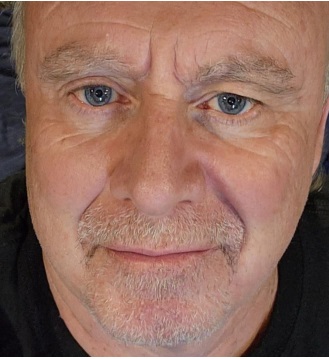 “At my age of 62 with white whiskers, I have developed a zero tolerance to government fraud and corruption.”—Darren Byler, M/V Wild Alaskan
“At my age of 62 with white whiskers, I have developed a zero tolerance to government fraud and corruption.”—Darren Byler, M/V Wild Alaskan
Forty-Seven days later, Byler’s boat was seized by Kodiak Harbor Officials the very same day Boat Buyer Robert Maw came to Kodiak to take possession of the vessel and pay all outstanding Harbor Fees that the Harbormaster would not accept payment from Byler for. I have personally read this documentation in a Robert Maw email posted in Document Dump # 12 it was quite compelling. Byler claims he had a verbal dispute with Kodiak Mayor Pat Branson the evening before the vessel seizure at the local Safeway in Kodiak. And that his boat was seized by a “corrupt mayor that took my boat and livelihood away without legal authority”. Byler also claims the orders to pull the vessel out of the water was given to Kodiak City Manager Mike Tvenge and ultimately ended up with Kodiak Ex-Harbormaster Lon White. Darren Byler also claims that others within the City are also aware of this fraudulent fact such as certain members of the Ports and Harbors Advisory Board that will “soon be coming forward to verify this fact”.
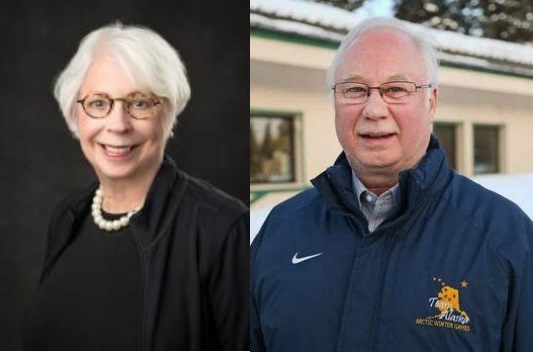
City of Kodiak Mayor Pat Branson and City of Kodiak City Manager Mike Tvenge
Photo Credit City of Kodiak
After three years of Byler trying to reclaim the Wild Alaskan from the City of Kodiak Shipyard, Byler claims City Officials and Cooper Curtis, Owner of Highmark Marine Fabrication, LLC without authority removed approximately $250,000.00 worth of personal belongings, equipment and aftermarket custom deck buildings from the Wild Alaskan. Byler claims the bar was the most beautiful, cleanest bar in Kodiak. Byler says, “this is felony theft and there is no other way to look at it.”
The City of Kodiak then went on to tow the vessel 75 miles offshore and sank her in 6,000 feet of water where the boat will never be seen again nor will it be possible to dive on. Byler Claims that City Officials committed several Federal Felonies by lying to the Environmental Protection Agency to obtain a permit to sink his boat. Byler has now posted the actual permit application he received through the FOIA Process and other documentation proving there were other “alternatives” in the Federal Statutes rather than the City being allowed to sink the vessel. Byler has posted this compelling evidence in Document Dump #14 on the Sinking of the Wild Alaskan
Facebook page. Byler has also posted Documents on the same page that proves City Council Member John Whiddon was the Business Developer for NWFF. Further, Byler claims, whistleblowers have come forward with the information that at least one other City Council Member works at NWFF that signed off to the Coast Guard that the hazardous materials had been identified from the vessel before sinking her. Byler claims this was all an inside sham and the vessel was not properly scuttled and that properly scuttling the vessel would have cost the City at least a one million dollars. Byler also claims the boat went down with all the hazardous materials on board and he will now be able to prove this fact when he gets subpoena and deposition power. See Document Dump #23
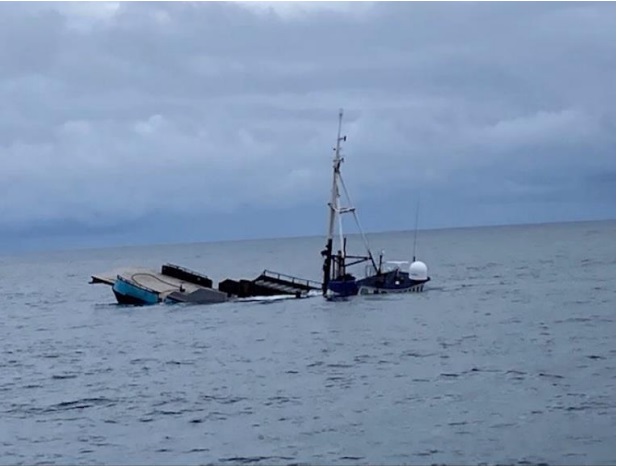
Wild Alaskan Sinks 75 Miles Offshore Kodiak Island in 6,000 Feet of Water
Photo Credit Tugboat Makushin
Just recently in 2023 Darren Byler filed a Ten Million Dollar Lawsuit against the City of Kodiak and certain City Officials for the illegal sinking of the Wild Alaskan. See Court Documents in Document Dump #21 on the Sinking of the Wild Alaskan Facebook page. Both the Coast Guard Lawsuit as well as the City of Kodiak Lawsuit will be ongoing for the next several months and possibly years.

2015 Photo of Darren Byler and his
daughter at the time that USCG
were trying to put him and his wife
in Federal Prison over an alleged
blackwater discharge
Byler claims that both the Coast Guard and the City of Kodiak conspired with each other in the small town of Kodiak to drive him out of business, put him and his wife
in Federal Prison while leaving their young child without parents and ultimately sunk his boat all over political and personal animosities and motivations.
Before publishing this article, I reached out to both the Coast Guard and the City of Kodiak for comment and both declined comment on this matter. I will be following this story closely with future articles and updates.
All Document Dumps can be reviewed on this page. >click here to read<
Article by Investigative Journalist John Beck, Maritime Justice






